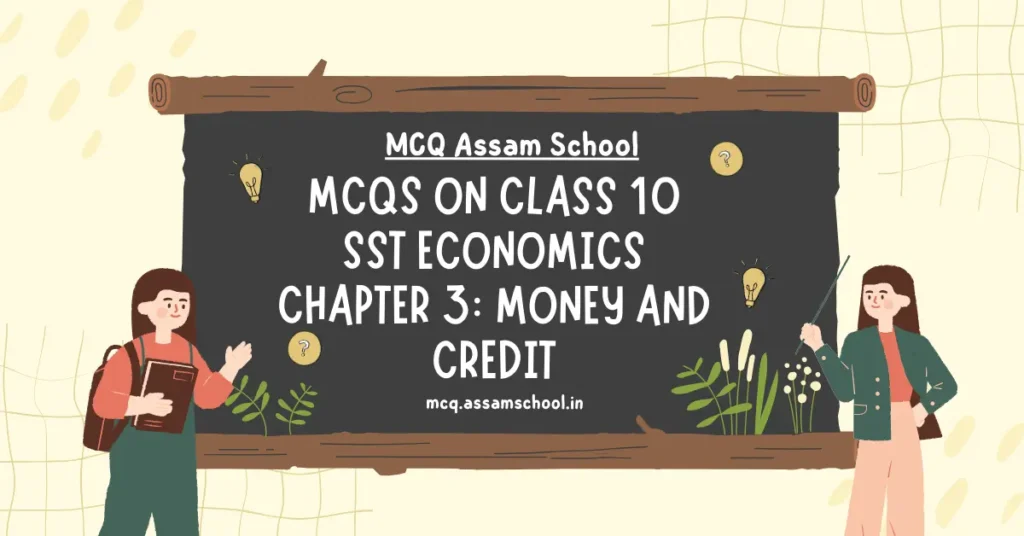Welcome to MCQ Assam School. This post contains 30 MCQs (Multiple Choice Questions) on Class 10 Social Science (Economics) Chapter 3. The name of the chapter is “Money and Credit”. So, basically, this post contains 30 MCQs on Money and Credit. These MCQs will help you to understand the chapter better and will also help you prepare for your exam.

The Chapter deals with the following topics:
- Money as a Medium of Exchange
- Modern Forms of Money
- Loan Activities of Bank
- Terms of Credit
- Formal Sector Credit in India, etc.
These MCQs can also act as a Mock Test. There are 30 MCQs. There are four options for each question. Out of the four options, only one option is correct. Choose the correct options for each question and click on the submit button to see the results. You can also, review your answers. For each right option, you will see a green check mark and for each wrong option, you will see a red cross mark. If the chosen option is wrong then a green check mark will appear near the right option. This way you will know the right answer.
Let’s begin.
30 MCQs on Money and Credit Class 10 SST Economics Chapter 3
Review Your Answers Above.
Related Posts
- MCQs on Development | Class 10 SST Economics Chapter 1
- MCQs on Sectors of The Indian Economy | Class 10 SST Economics Chapter 2
- MCQs on Globalization and The Indian Economy | Class 10 SST Economics Chapter 4
- MCQs Consumer Rights | Class 10 SST Economics Chapter 5
The Bottom Line
I hope these 30 Multiple-choice questions have helped you learn more about the Class 10 Social Science (Economics) Chapter 3 (Money and Credit) in detail. You can retake the test anytime you want by refreshing the page and review your results.
If you like the content of this post, share it with your friends. They might also benefit from these MCQs.
Check out for more MCQs on other chapters of Class 10 Social Science. We also have MCQs on other subjects ranging from Class 5 to 10.
Abdur Rohman is an Electrical Engineer from Charaideo, Assam, who wears multiple hats as a part-time teacher, blogger, entrepreneur, and digital marketer. Passionate about education, he founded The Assam School blog to provide free, comprehensive textbook solutions, MCQs (Multiple Choice Questions), and other academic content for students from Class V to XII.
